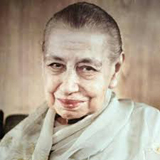Integral health
Apropos aggression
Is aggression a basic instinct? Konrad Lorenz had described it to be an innate and heritable trait that facilitated survival. Yet sophisticated studies have found that even the Western Lowland gorilla in the heart of the African equatorial rain-forest demonstrates a dynamic social structure with a high degree of tolerance and peaceful co-existence (1). This raises a metaphysical query, whether harmony is more basic than aggression.
Scientists, psychologists and sociologists attempt to understand aggression in different ways. While a section of behavioural scientists focus on the limbic system and neuro-transmitters, others focus on the neuro-endocrinal factors. Psychologists are more divided, with groups of researchers favouring different psychoanalytic, humanistic and social learning theories.
The psychoanalytic theory of Freud traced aggression to the Death instinct or Thanatos that interplayed with the Life-instinct or Eros and was therefore considered to be innate and ingrained. Other psychoanalysts stressed different factors like striving for superiority (Adler); protective (Lorenz) and regression to primitive behaviour, if other tactics failed (McDougall). The humanistic theory regarded aggression as an outcome of frustration, arising from the blocking of goals in life. On the other hand, Albert Bandura’s social learning theory regarded aggression as a learned behaviour acquired through past experiences and reinforced by rewards. The determinants of aggression could be social, environmental or situational.
It is not surprising to have such a divergence of views on aggression. This world of differentiated multiplicity has endless variations of human nature, which is perfectly logical or else we would have a bald and boring scenario without any uniqueness. In a creation where endless variability is allowed, there would automatically emerge divergent perspectives of a single phenomenon, especially for basic human characteristics. And as different planes of consciousness are simultaneously represented in the individual and the universe, it is no wonder that thinkers and researchers would dive deep down different planes to unearth secrets that could explain basic phenomena like aggression. Thus the evolutionary paradigm would study how aggression moves up the scale from the world of animals. The physical paradigm would unravel the workings of the consciousness as discernible through the neuro-endocrine axis. The depth psychology would delve down to understand the unconscious roots of behaviour. The social sciences would study the social matrix that facilitates aggression.
Yoga psychology acknowledges that a world of multiplicity, that facilitates uniqueness, can only do justice to itself if it has lost the unity-principle. But that was inevitable to build a world of variability and differentiation. What could happen if we shifted to a world where the multiplicity was aware of the unity-principle, where variability would manifest in a matrix of unity? All our equations would change.
Spiritual experience reveals that such a possibility actually exists where the multiplicity is simultaneously aware of its unitary origin. This is possible in a superior poise of Nature called Higher Nature or Parāprakṛti.
Nature or Prakṛti in the Indian tradition is actually cosmic energy. The world of multiplicity and variability that has lost contact with the unity-principle operates in the lower Nature or Aparāprakṛti. This is a world of Ignorance as the underlying unity cannot express itself. It is natural that a variable multiplicity can thrive in a matrix of disequilibrium where development of the uniqueness of a particular entity can be at the cost of another. If one nation wins a battle or if one team wins a football match then simultaneously another nation is defeated and another team is the loser.
Thus in the lower Nature it is natural that the play of strife, conflict and battle should dominate. To be successful in the lower Nature, aggression and violence would not be unnatural. There was therefore no option for Sri Kṛṣna but to sanction the battle of Mahābhārata as a law of action in the field of Ignorance. No wonder that Heraclitus had declared that war was the father of all things. History is testimony to the fact that it is itself a chronicle of battles and assassinations in a life of peoples subsisting in Ignorance. If an emperor wanted to enforce peace, he had to force the rebellious groups, albeit with violence, to agree to peace! In other words, it is impossible to avoid aggression in the domain of lower Nature.
As aggression is inevitable in the lower Nature, some idealists have advocated peaceful and physically non-violent approaches to demand justice and rights, thinking that this could be a superior mode of action. The Mother was categorical that physical non-violence actually facilitated moral violence which was equally disruptive: “…moral violence is just as bad as physical violence. It can even be worse; that is, at least physical violence obliges you to become strong, self-controlled, whereas moral violence….. You can be like this (Mother demonstrates an apparent calm) and yet have a terrible moral violence (2).”
It is only if there is a shift of consciousness from the lower Nature to the Higher Nature that the saga of aggression and violence would become redundant. The Higher Nature operates on the unity-principle and is therefore reflective of true Knowledge that is wholistic and integral. The Higher Nature is the domain of peace, harmony and spontaneous mutuality where aggression and violence are not required.
It was out of compulsion that war was advocated in the Mahābhārata as a law of action in the lower Nature of Ignorance. Even then the Indian tradition had advocated all means to minimise violence in the lower Nature. Kireet Joshi lucidly explains how war was recommended only for the protection of justice. To minimise casualties, not everyone but a section of people were to participate. That was the creed of the Kṣatriyaḥ or Aryan fighter. Joshi adds: “And even when Sri Krishna asked Arjuna to take up arms, he insisted that he should fight without anger, without wrath and without any sense of revenge. If you read Mahabharata carefully, you will find that Sri Krishna made an extraordinary effort to avoid a war; it was only when no other alternative was available that he came to advocate war, and that, too, as a means available at that time for a progressive development of humanity towards the ideal of justice and truth (3).”
Aggression therefore can be considered basic at the domain of lower Nature but loses its necessity in the realm of Higher Nature. To prepare for a shift in consciousness to the Higher Nature, the first psychological work that has to be done is to shift from the ego, that is the nodal point of dissonance and disharmony, to the Beyond-ego soul-principle or psychic being. This movement to the centre of the being allows one access to the higher ranges of consciousness.
In doing so, we can also shift from half-hearted attempts to maintain health and well-being to a wholistic or integral paradigm of health. Aggression per se is an important contributor of our maladies and illnesses for besides its direct effect, it contributes to the unconscious cause of not only frank psychiatric illnesses but of psychosomatic disorders as well.
The work to surpass the individual ego, when taken up at a broader scale, paves the way for the flowering of world-peace, to raise above all violence and strife. In other words, humanity must be ready to outgrow its ego-bound limitations along an evolutionary trajectory of consciousness.
References
1. Forcina G et al (University of Barcelona). Social Behaviour of Western Lowland Gorillas, 6 Feb, 2019 [Online] Available from: www.sciencedaily.com [accessed 1st December 2020].
2. The Mother. The Collected Works of the Mother, Volume 12. 2nd ed. Pondicherry: Sri Aurobindo Ashram Trust; 2002, p. 438.
3. Joshi, K. Bhagavadgita and Contemporary Crisis. New Delhi: Nag Publishers; 1996, p.109.
Share with us (Comments, contributions, opinions)
When reproducing this feature, please credit NAMAH, and give the byline. Please send us cuttings.




